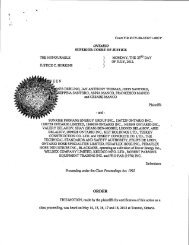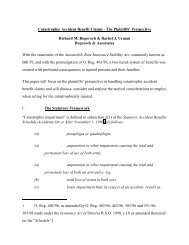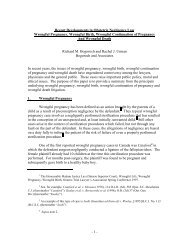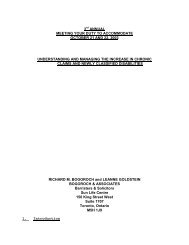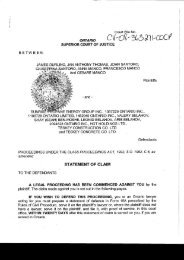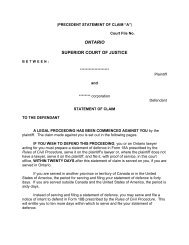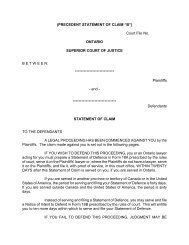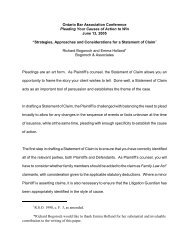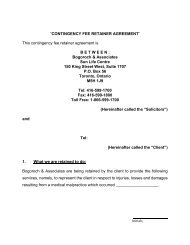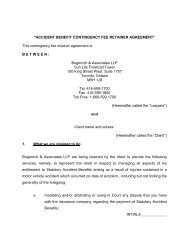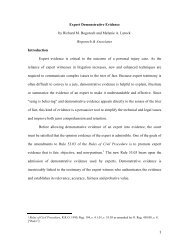"Thin Skull" Damages into "Crumbling Skull" Damages - Bogoroch ...
"Thin Skull" Damages into "Crumbling Skull" Damages - Bogoroch ...
"Thin Skull" Damages into "Crumbling Skull" Damages - Bogoroch ...
You also want an ePaper? Increase the reach of your titles
YUMPU automatically turns print PDFs into web optimized ePapers that Google loves.
-6-<br />
resumed his regular light exercise routine on the advice of his physician and suffered a herniated disc<br />
while stretching. The only issue at trial was whether the plaintiff’s disc herniation was caused by<br />
the injuries sustained in the accidents, or whether it was attributable to his pre-existing back<br />
problems. The trial judge held that, although the accidents were not the sole cause of the herniation,<br />
the plaintiff proved on a balance of probabilities that they contributed in some degree. The trial<br />
judge found that the accidents were responsible for 25% of the plaintiff’s injury and awarded the<br />
plaintiff 25% of the global damages assessed. The plaintiff’s appeal to the Court of Appeal was<br />
dismissed. At issue on the appeal to the Supreme Court of Canada was the whether the trial judge<br />
erred in apportioning causation (and therefore damages) between tortious and non-tortious causes.<br />
The Court held that, once the trial judge found that the plaintiff’s injuries in the motor vehicle<br />
accidents materially contributed to the disc herniation (i.e., that they contributed to the injury to the<br />
extent that they fell outside the de minimus range 4 ), the plaintiff had met the burden of proof and<br />
causation had been established. With respect to damages, the Court held that there could be no<br />
apportionment of damages between tortious and non-tortious contributing factors and therefore, the<br />
defendant would be fully liable for all damages flowing from the disc herniation. A detailed analysis<br />
of the Court’s reasoning follows.<br />
2. Causation<br />
Major J., speaking on behalf of a unanimous Court, enunciated several general principles of<br />
4 The Supreme Court of Canada held that the trial judge’s assessment that the accidents<br />
contributed to 25% of the plaintiff’s disc herniation fell outside the de minimus range.



